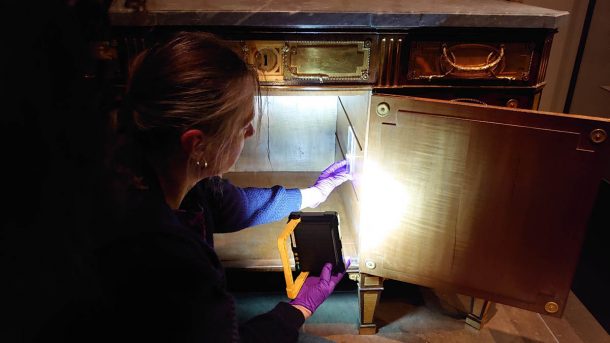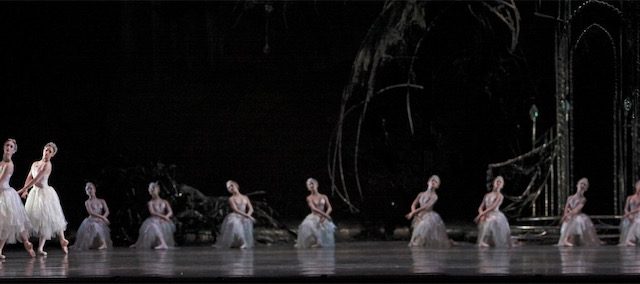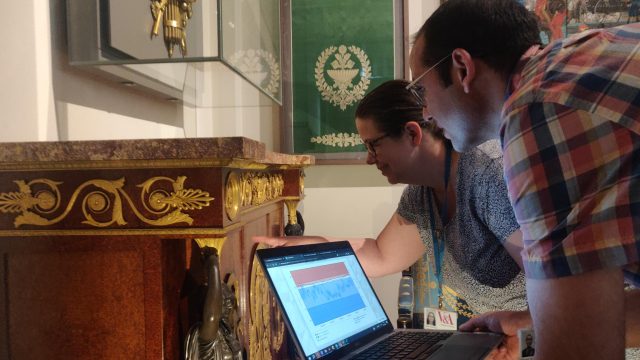The V&A has teamed up with the Getty Conservation Institute (GCI) and the Polish Academy of Sciences to work on innovative conservation techniques for monitoring museum objects. Acoustic emission monitoring, a method that captures stress-induced acoustic (sound) waves in materials, has become a valuable tool for understanding how objects respond to environmental conditions, helping the V&A in achieving its sustainability targets.

A team of scientists and conservators have been installing monitoring equipment in two galleries: Europe 1600-1815 and the Dr Susan Weber Gallery of Furniture galleries. This year-long initiative continues research conducted a decade ago, aiming to monitor and analyse any changes since the initial study.

Acoustic emission is a phenomenon by which materials release stress-induced acoustic waves when subjected to external forces. This characteristic enables the real-time tracking of an object’s response to environmental conditions. This kind of monitoring aligns with our commitment to sustainability, and helps to provide safe climates for objects. By analysing how objects, especially those made from wood with complex decorative surfaces, which respond to environmental factors in unpredictable ways, we will be able to optimise our climate control systems. This should help us be less reliant on climate control systems, while also reducing the risk of micro-damage occuring in furniture. You can see more information about how acoustic emission has been used by the GCI here.


